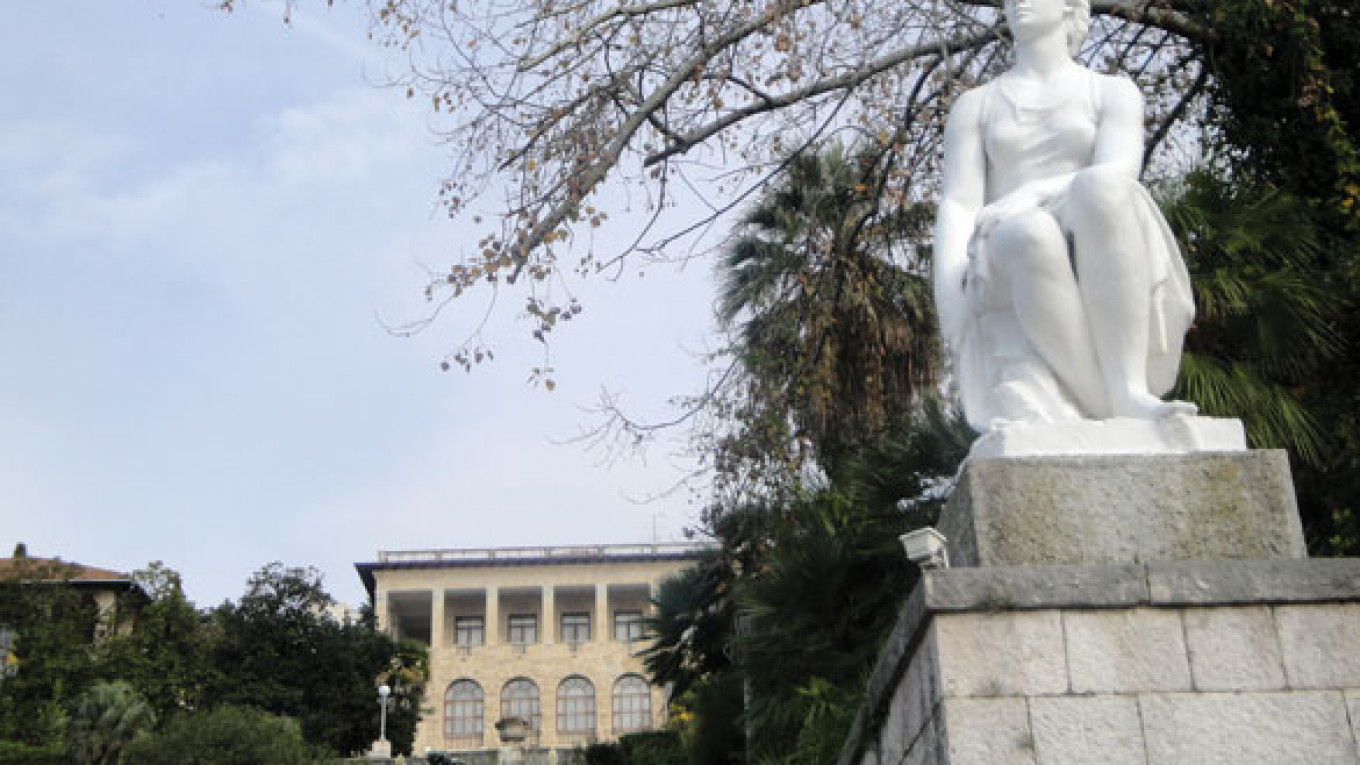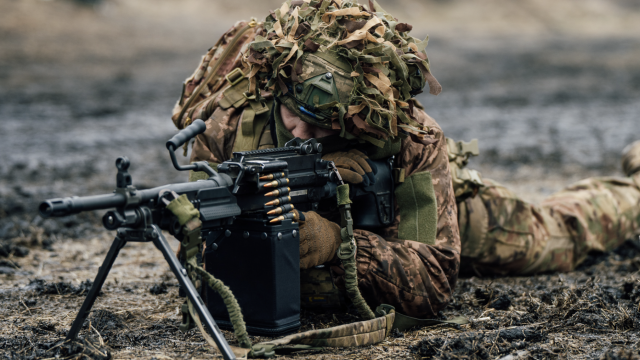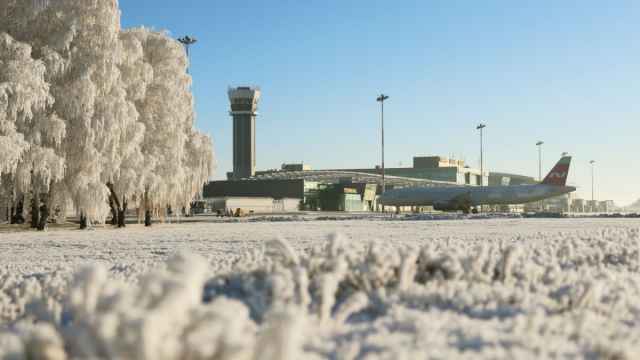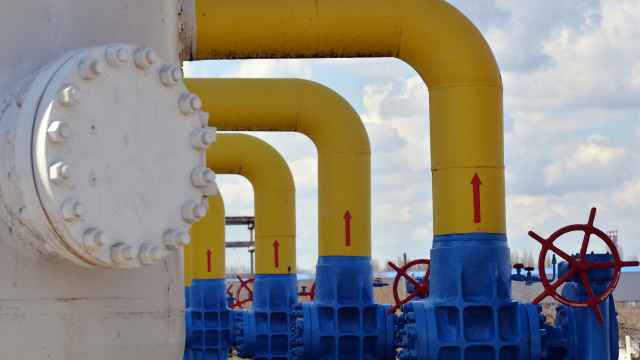Sochi started functioning as a resort during imperial times, mostly catering to the aristocracy with even the royal family taking up lodgings nearby. These vacation offerings got an approving nod from Vladimir Lenin after the revolution, and the Soviet leader declared the area open for the proletariat. In that sense, General Secretary Josef Stalin was not the first to think of making Sochi a socialist resort, but few would refute how much has been done on his orders to turn the city into the luring paradise it was during the Soviet period.
Sochi got more than 1 billion rubles for its transformation in the 1930s — a fantastic sum by the standards of the time. Much of the money went to develop Matsesta's healing sulfur springs, which a multitude of the country's political leaders have used to regain their strength and beat off aging.
Stalin had come to soak in the Matsesta baths as a way to treat his rheumatism and sick hand. At first he stayed in a dacha of a former local entrepreneur, but this arrangement did not quite align with the party's position on capitalism, so Stalin ultimately ordered his own dacha to be built not too far from the bathhouses.
The work on Stalin's dacha made it all the more important and urgent to turn Sochi into a first rate resort. The main transportation artery running along the coast was named Stalin Avenue, now Kurotny Prospekt, and strict dress and behavior rules were observed there. The road was cleaned three times per day, drivers had to wash their cars to go on it and women were forbidden from parading around in their bathrobes.
Meanwhile, landscape and construction work went ahead at record speed. Ministries, factories and unions hastened to build sanatoria for their workers in the area. Party elite vacationers were sent to the Rossia sanatorium, miners went to Ordzhonikidze, the metalworkers to Metallurg while Frunze had the honor of hosting party workers, labor camp survivors, foreign communists and cosmonauts. Some of the latter's most notable guests include opera legend Fyodor Shalyapin and the first man in space, Yury Gagarin.
Many of the sanatoria are now open for public bookings but continue to operate according to the Soviet formula — "three diet meals per day plus medical procedures." But life in a couple of them has stayed pretty much the same as before the collapse of the Soviet Union. The Voroshilov military sanatorium, for example, has smoothly passed over from the jurisdiction of the Soviet Red Army to the modern-day Ministry of Defense.
A full tour of these historical sanatoria would take days, not to mention how tricky it would be to organize as their interiors are now mostly open only to guests. The following route takes you to the more accessible venues in the city that will give an equal impression of how grand Sochi was under Stalin's all-powerful patronage.
Stalin's Villa
120 Kurortny Prospekt
Tours by appointment
+7 (862) 267-0502
+7 (862) 269-5600
If the walls of this house could talk … Actually, it is best not to speculate what they would say. Josef Stalin's dacha provided the setting in which the General Secretary took some of his most significant political decisions, hosted esteemed (sometimes trembling) guests, and freely expressed his paranoia by equipping it with the latest security inventions.
The dacha was built specifically for Stalin in 1937. It is situated on a hill, 50 meters above sea level, with scenic views of the Greater Caucasus Mountain range and surrounded by a forest. The views and fresh air were supposed to help improve Stalin's health, but he probably valued them even more for the security buffer they provided. You can appreciate that fully if you decide to scale the hill by foot and then attempt to locate the moss-green house among the trees and shrubbery.
This natural defense shield was not enough to relax Stalin so he had the dacha surrounded by three security cordons while staying there. What's more, his custom-made leather couch was stuffed with horsehair so that flying bullets would get lodged there and its back was high enough to fully cover the leader's 165-cm frame. Also anxious about his privacy, Stalin had special keyholes made in his bed chambers to prevent any overly risque servants from spying on him.
Stalin usually stayed in Sochi from August to October and was accompanied on these visits by his wife, Nadezhda Alliluyeva. After her death in 1932 and the completion of Stalin's personal dacha complex, members of the party elite took up nearby cottages to keep their boss company. They included Vyacheslav Molotov, future foreign minister and one of the key organizers of the repressions, defense minister and repressions ally Kliment Voroshilov, as well as the head of the secret police apparatus Lavrenty Beria. The country's most powerful men would come to the dacha at mealtimes and discuss political questions over food. Some of the key decisions about the repressions were made here and then orders were dispatched by telegram to the capital.
The dacha became a safe harbor for Stalin's daughter, daughter-in-law and granddaughter during World War II and the ruler himself came here incognito in 1945 after suffering a stroke.
Stalin lived in a separate building from his support staff — allegedly he disliked the clatter of plates and the smell of food in the dacha kitchens. One local legend claims that there was supposed to be a fountain in the middle of the complex, but it was taken out because Stalin did not want to be disturbed by the sounds of dripping water.
You can see how the Soviet leader lived first-hand by arranging a visit to the dacha, the lower floor of which now functions as a museum. The dacha is located on the premises of the Zelyonaya Roscha sanatorium, a functioning facility that welcomes guests who want to settle in the Soviet leader's former living quarters.
Stalin's carpet, billiards table and personal items are on display and a wax figure of the dacha's original owner sits behind the work table in a uniform and with a pipe. Make sure also to take note of the low staircase steps, purposefully designed this way due to Stalin's rheumatism.
The architect tasked to create this fantastic fortress probably did not sleep nights to satisfy all of Stalin's whims, though the admirable work ethic was still not enough to save him from what came next. Miron Merzhanov was arrested in 1943, sentenced to 10 years in a labor camp and ended up working on architecture projects in the camp system's secret research libraries. Merzhanov's wife was also thrown into a Gulag camp and died there.
Matsesta Sculpture
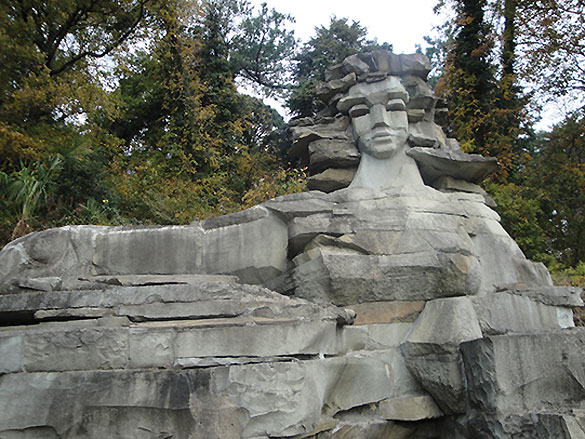
Kurortny Prospekt on a turn to Alleya Cheltenkhema
The Matsesta sculpture has become a symbol of the sulfur springs resort that it directs visitors too. The sculpture depicts a girl hugging a mountain and is remarkable for how natural it looks, almost as if the female's face was cut out of stone by nature itself. The fountain in front of the sculpture symbolizes Matsesta's healing waters.
According to one legend, local people previously had to sacrifice the most beautiful girl to an evil mountain spirit who controlled the healing water spring. The people eventually rebelled against the villain so he blocked off the water source with a large rock. One day, a beautiful girl called Matsesta went to the mountain to collect water for her sick, aging parents. She managed to kill the spirit, crack open the rock and give people back the water, but perished in turn. Grateful locals named the water in her honor.
In another legend, a girl fell in love with a hunter, but her sister spread lies about her so the girl blushed from shame and hid underground. Many years later the hunter's great-grandson got sick while walking in the forest and found a spring of hot water that looked like blue milk. He jumped into it and recovered. Here Matsesta is, again, the embodiment of the water and its miraculous healing powers.
Matsesta Baths
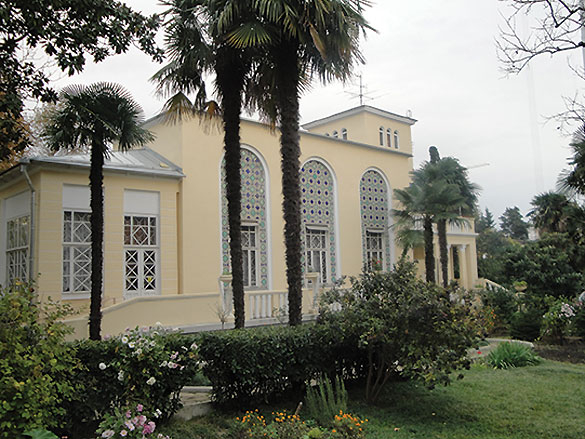
2 Lechebny Pereulok
Matsesta baths:
By appointment
Matsesta spring:
8 a.m. to 8 p.m., break from 2 p.m. to 2:30 p.m.
+7 (862) 267-7308
+7 (862) 267-7166
matsesta.info
Matsesta started to develop as a spa destination in 1902 when a local doctor put two wooden baths near the entrance of a cave that had direct access to the mineral water and started treating his first patients. Growing demand for the procedures eventually led to the founding of the resort. Now Matsesta is year-round spa complex, one of the largest in the country, and more than 40,000 people from around the world come here annually to plunge their bodies into recovery mode.
The area's most valuable resource is its medicinal sulfurous water. The water contains around 20 chemicals, including iodine, bromine, fluorine and its main therapeutical component, hydrogen sulphide.
Procedures involving Matsesta's waters can help normalize blood pressure, improve blood supply, calm the nervous system, speed up metabolism, reduce body weight, treat gynecological illnesses, correct endocrine misbalances and pull out toxins. The waters have healing powers when absorbed through the skin or breathed in. Skin gets red when it touches the water because the blood vessels dilate. This property has even fueled some comparisons between the Matsesta water and fire.
A traditional procedure involves patients sitting in a bath of Matsesta water, but patients can also opt for partial baths that target specific body parts. The baths are offered at the original source of the water in Old Matsesta because the water loses some of its healing properties if transported.
Matsesta's first bathhouse was built in 1912, but has since been transformed into the Sochi Aquarium. The sprawling building located on the hill at Old Matsesta became the new major bathhouse during Soviet times and functions as such to this day. If you are not committed to a full bath, there is a water spring to the right, next to the VIP hall, where you can breathe in the water's healing properties. Of course, you also cannot avoid smelling the pungent water if you simply walk by the bathhouse or along the banks of the river that flows near it.
Ordzhonikidze Sanatorium
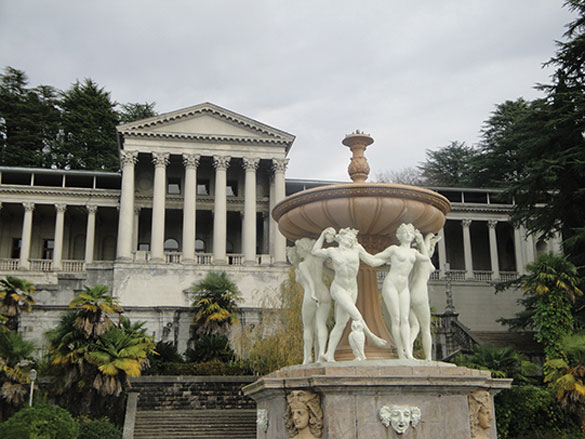
96 Kurortny Prospekt
+7 (862) 269-4420
+7 (862) 269-4419
ordzhonikidze.su
If there is only one sanatorium that you have time to visit during your stay at Sochi, make it Ordzhonikidze. It is a true Soviet "people's palace" with multiple pavilions, fountains and wild subtropical gardens. There is something inexplicably romantic about this place. The grounds appear abandoned with paint chipping on the formerly majestic buildings and plants growing through the cracks on the stone staircases.
It makes sense that Ordzhonikidze would be one of the grandest Sochi sanatoria. Grigory, or Sergo, Ordzhonikidze was an influential Georgian revolutionary who met Josef Stalin in
a prison cell back in 1907. Their friendship was close enough for Ordzhonikidze to be one of the few people who was allowed to address Stalin informally, and he was even trusted to spend
a night in Stalin's house after the leader's wife committed suicide. Their friendship worsened later due to clashing views on Stalin's political repressions, and Ordzhonikidze ultimately killed himself.
Ordzhonikidze picked the location for the sanatorium himself in 1934 and welcomed the first visitors three years later. The guests mostly consisted of miners and their families since Ordzhonikidze was the head of the Industry Ministry and the sanatorium passed under its rule.
The sanatorium can accommodate 640 guests, has its own medical complex, beach, tennis courts, library and indoor pool with
a sauna. It is also well known for its many walking routes. You can still see the old Soviet bulletin boards where doctors recommend the best routes to take. The first man in space, Yuri Gagarin, swam in the sanatorium's swimming pool, which was also the training ground for the Soviet Union's first swimming medalist.
Some of the illnesses that are treated at Ordzhonikidze include allergies, gynecological diseases, and respiratory, cardiovascular and metabolic misbalances. For the latter there is even a menu with 15 diets, though there are kiosks opposite where patients can buy sweets and other items that have not passed under medical surveillance.
The complex was closed for major reconstruction in 2010. Although people said before then that staying there was expensive, for some it is still the ideal place to go, and they praise the grandeur of the architecture as well as the medical services offered.
A Message from The Moscow Times:
Dear readers,
We are facing unprecedented challenges. Russia's Prosecutor General's Office has designated The Moscow Times as an "undesirable" organization, criminalizing our work and putting our staff at risk of prosecution. This follows our earlier unjust labeling as a "foreign agent."
These actions are direct attempts to silence independent journalism in Russia. The authorities claim our work "discredits the decisions of the Russian leadership." We see things differently: we strive to provide accurate, unbiased reporting on Russia.
We, the journalists of The Moscow Times, refuse to be silenced. But to continue our work, we need your help.
Your support, no matter how small, makes a world of difference. If you can, please support us monthly starting from just $2. It's quick to set up, and every contribution makes a significant impact.
By supporting The Moscow Times, you're defending open, independent journalism in the face of repression. Thank you for standing with us.
Remind me later.


